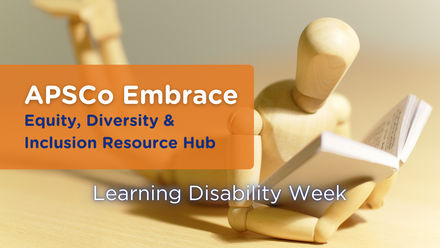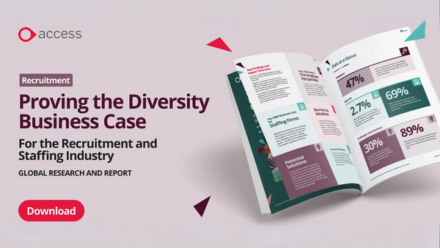APSCo Embrace: Intersectionality Awareness (August 2024)
Intersectionality is a concept first put forward by civil rights advocate and Professor, Kimberlé Crenshaw in 1989. Although its origins lie in academia, truly understanding intersectionality is key for workplaces to achieve equity, diversity and inclusion. Intersectionality is the understanding that identity is comprised of multiple elements. These different elements make us unique, and their interactions influence our experiences. For those whose identity corresponds to multiple marginalised groups, there is a greater risk of discrimination.
In the context of EDI programmes, where we often see a focus on individual aspects of identity, we have to be careful about this kind of singular grouping because it can ultimately ignore the unique experiences of those whose identities intersect with multiple marginalised groups. You can find APSCo’s full catalogue of EDI resources here.
Why we need to consider intersectionality in our EDI strategies
Business leaders who are dedicated to addressing inequality at work must consider intersectionality in order for their EDI strategies to be meaningfully impactful. Intersectionality means recognising that individuals can have various forms of privilege or discrimination, typically based on aspects of their identity, including race, gender, sexuality, disability, immigration status, socioeconomic background and more. Taking these factors into consideration are crucial for employees taking steps to build an inclusive workplace.
Addressing the importance of intersectionality means going beyond a surface-level approach to diversity and addressing the multiple barriers our colleagues and employees face to build genuinely inclusive organisations.
An equitable approach to intersectionality means ensuring that marginalised employees receive the specific resources and support they need. Working to provide this support, particularly to those belonging to multiple marginalised groups, enables employees to thrive—boosting productivity and improving retention rates.
An intersectional approach to our EDI strategies also facilitates better collaboration. Marginalised employees are better able to participate and share their ideas when they feel a sense of belonging at work. Additionally, when employees understand and relate to one another better, teamwork improves in all facets—decision making, problem solving, innovation, and so on.
Risks of not considering intersectionality
Discrimination is the foremost problem that comes with overlooking intersectionality. Failing to embed an intersectional understanding in our policies invariably means an increased risk of discrimination for our colleagues who are part of multiple marginalised groups.
Failing to protect our employees from discrimination in the workplace means they will be considerably less empowered to reach their potential within your organisation, which in turn affects company performance overall.
Neglecting to consider intersectionality will also affect employee retention—and from a business perspective, a lack of diversity means your organisation will have a narrower reach in terms of customer base.
It’s common for corporate EDI programs to focus primarily on gender equality as it’s often seen as the easiest and most universal issue. But like all pillars of diversity, taking gender in isolation overlooks the unique experiences of people with different gender identities in connection with their other characteristics, such as ethnicity, ability, sexual orientation, age, socio-economic background etc.
A singular focus will often leave those who experience multiple forms of marginalisation feeling as though parts of their identity have been erased or aren’t considered to be as important, which leads to a lack of workplace belonging.
Tips for incorporating intersectionality awareness into your EDI strategy
Conversation
-
Create communication channels that allow employees to share their thoughts and suggestions without fear of repercussions
-
Foster an environment in which employees at all levels can engage in conversations that are sometimes difficult or even uncomfortable about our differences
-
Enter conversations about intersectionality from the perspective of learning, rather than confrontation—be open to considering your own privilege and listen to learn, not respond
-
Hold events for the purpose of generating conversation about a particular community. For example, a Pride month bake sale should not be about eating cake in front of a rainbow flag, but an occasion for employees to connect and learn about the LGBTQ+ community and allyship
-
Consider which voices need to be heard most at a given moment and when is the appropriate time for you to contribute your views. Sometimes this means letting others speak first in meetings and encouraging diverse perspectives.
Learning
-
Recognise the importance of unlearning—identifying where behaviour is unacceptable and questioning stereotypes or previously learned biases
-
Focused training rather than an overly generalised approach is more likely to address the specific needs of intersectional communities
Leadership
-
Go beyond passive support for EDI initiatives by getting involved as a participant, not as a leader
-
Reverse mentoring allows for meaningful conversation about diversity and intersectionality—we benefit from shared learning, varied exchanges of knowledge, and exposure to different experiences and perspectives
-
Foster a culture in which everyone in the organisation understands the role that they play as an individual in building an inclusive workplace
-
Actively seek out a range of perspectives and consider how you can engage with a wider population through the business
-
Try to ensure that the role models you uplift are reflective of society and the real world, representing a range of experiences and backgrounds
Allyship
-
True allyship requires active and consistent action to deepen your understanding and make a positive difference
-
It’s impossible to be an ally without considering intersectionality—it’s essential that we seek to be allies to all, rather than only a single community
Summary
Intersectionality means recognising the full scope of human identity and how all of our distinct characteristics shape our experiences. An intersectional understanding informs a more holistic approach to EDI strategy, and ultimately supports more genuine and impactful inclusion in the workplace. And because intersectionality invites everyone to learn and relate to one another as unique individuals, we all benefit together.
--
Caroline Fox is the Global Equality, Diversity & Inclusion Strategy Lead at Tenth Revolution Group. Caroline joined the tech talent solutions firm in 2013 as part of the talent acquisition team and now leads the company’s EDI program, bolstering an inclusive workspace and promoting best practice within the wider tech industry.



